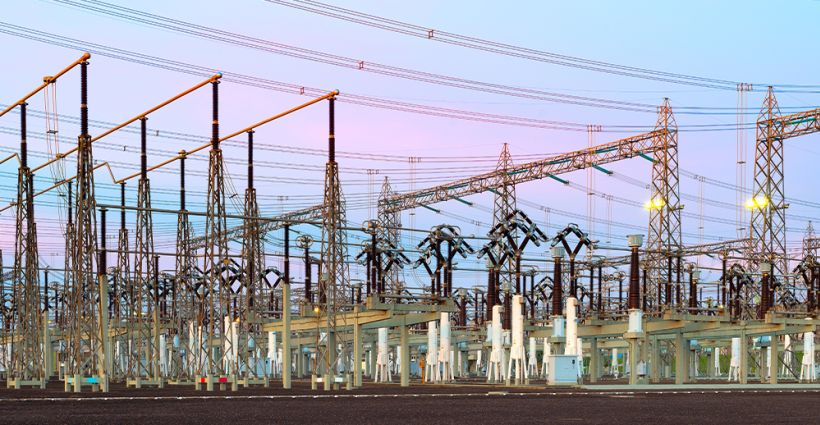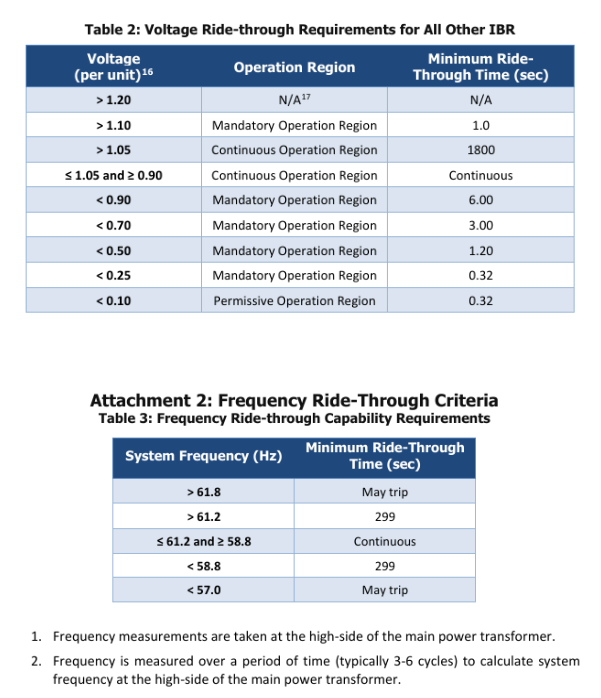Understanding NERC PRC-029-1 and PRC-030-1: New Standards for Inverter-Based Resources

NERC’s new standards PRC-029-1 and PRC-030-1 set the stage for how inverter-based resources (IBRs) must perform during and after grid disturbances.
- PRC-029-1 focuses on ensuring IBRs remain connected and support voltage and frequency stability during events
- PRC-030-1 defines how Generator Operators (GOs) must analyze and correct performance issues following disturbances
Both standards become effective October 1, 2026, requiring affected GOs to ensure their IBRs are properly designed, monitored, and operated to meet the new requirements
Key points to keep in mind:
- Limited vendors are available for implementation so schedule time early
- If your unit doesn’t meet PRC-029 compliance identify your next steps now
- Establish internal processes and procedures to address these new standards
These updates represent a major shift in how renewable and distributed energy resources are integrated into the grid, emphasizing reliability, accountability, and proactive compliance.

Overview
As the power grid continues to integrate more solar, wind, and battery resources, ensuring these systems respond reliably to grid disturbances is a top priority. NERC is implementing two new reliability standards that focus on the performance and monitoring of IBRs. Both standards take effect October 1, 2026, and apply to Generator Owners (GOs) who operate large IBR facilities.
PRC-029-1: Frequency and Voltage Ride-Through Performance
PRC-029-1 applies to:
- Category 1: Bulk Electric System (BES) IBRs with an aggregate nameplate rating greater than 75 MVA
- Category 2: Non-BES IBRs with an aggregate nameplate rating greater than 20 MVA and connected at voltages above 60 kV
What It Does
PRC-029-1 sets frequency and voltage ride-through performance expectations for IBRs. It requires these resources to inject current and perform voltage support during a disturbance on the bulk power system (BPS). It also prohibits momentary cessation (when an inverter stops generating briefly) within the defined “no-trip” zone during such disturbances.
The standard introduces a new NERC definition of ride-through:
- The plant or facility remains connected and continues operating through voltage or frequency disturbances.

Requirements and Implementation
Requirements R1-R3 direct entities to ensure their IBR units are designed and operated to meet specific performance criteria. The design elements can be implemented more quickly, while operational elements will take longer, since they depend on real disturbance monitoring data.
Entities must meet the design requirements within 12 months of regulatory approval. Compliance with operational requirements will follow once disturbance monitoring equipment is installed, as outlined in the PRC-028-1 implementation plan.
R1-R3: Capability and Performance
- Capability-based (Design): GOs must ensure their IBRs are designed to meet the new performance requirements
- BES IBRs must comply by the effective date, October 1, 2026
- Non-BES IBRs must comply by the later of January 1, 2027, or the effective date
- Performance-based (Operation): Entities must demonstrate their IBRs perform as required using disturbance monitoring data. These requirements take effect after installation of disturbance monitoring equipment as specified in PER-028-1
Requirement R4 addresses equipment limitations and potential exemptions and becomes enforceable on the same schedule as R1-R3. However, legacy IBRs with certain technical limitations may qualify for limited exemptions. Per FERC Order No. 901, these exemptions only apply to units that:
- Are already in operation when PRC-029-1 takes effect
- Cannot meet voltage ride-through performance requirements because their hardware cannot be updated or adjusted through software changes
Key Considerations During Implementation
- Vendor availability: if you are outsourcing implementation, remember a limited number of vendors are available. It’s important to secure a place on their schedule as soon as possible to avoid delays.
- Assessing compliance gaps: if your unit does not currently meet PRC-029 compliance, determine your next steps early. You may need to perform a gap analysis, engage your equipment manufacturer, or consult with a NERC compliance specialist
- Internal readiness: do you have documented processes or procedures in place to address the new standards? Having these defined will streamline implementation, verification, and future audits.
Implementation timeline

Plants in the ERCOT region must coordinate with ERCOT NOGRP245 or equivalent requirements in effect when implementing NERC PRC-029 requirements.
PRC-030-1: Event Analysis and Corrective Actions
While PRC-029 focuses on performance during grid disturbances, PRC-030-1 emphasizes what happens after those events. It establishes a structured process for identifying, analyzing, and correcting IBR performance issues.
What It Does
PRC-030 includes four requirements that direct GOs to:
- Identify events where a facility experiences a complete loss of output or a large change in output (20 MW or more and at least 10% of the plant’s gross nameplate within four seconds)
- Analyze identified events to determine causes and contributing factors
- Develop Corrective Action Plans (CAPs) or provide technical justification if no corrective action is needed
- Implement the CAPs to mitigate future performance risks

PRC-029-1 and PRC-030-1 mark important steps forward in defining how IBRs should behave before, during, and after a disturbance. These standards help ensure the growing number of renewable and disturbed energy resources can support the reliability of the electric grid.
At HSI, we help GOs prepare for evolving NERC compliance requirements through compliance support and expert-led training designed to make complex standards easier to understand and apply.


